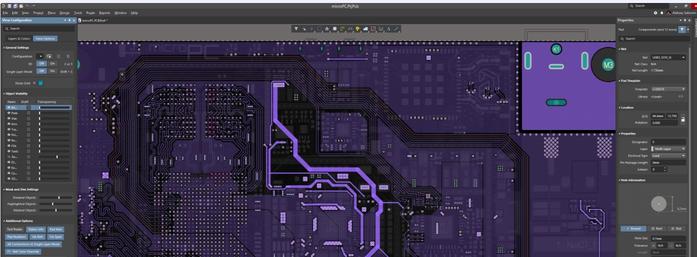Electronic Design Automation (EDA) tools have revolutionized the field of Printed Circuit Board (PCB) design and simulation. As electronic devices become more complex and compact, the role of EDA tools becomes increasingly significant. This article will explore the importance of advanced EDA tools in modern PCB design and simulation, as well as some key features and benefits they offer.

The Role of EDA Tools in PCB Design
EDA tools are software solutions like Altium that assist engineers and designers in various aspects of PCB design, from schematic capture and component placement to routing and simulation. These tools are indispensable for the design and validation of PCBs, helping to streamline the development process and ensure the functionality and reliability of electronic devices.
Key Features and Benefits of Advanced EDA Tools
- Schematic Capture: EDA tools offer intuitive and efficient schematic capture capabilities. Designers can create and edit electronic schematics, adding components, connectors, and interconnections with ease. This graphical representation of the circuit forms the basis for the entire design.
- Component Libraries: EDA tools come with extensive component libraries that include a wide range of pre-modeled electronic components. This feature saves designers time and effort in creating custom components, enabling them to focus on the unique aspects of their design.
- PCB Layout and Routing: Advanced EDA tools provide powerful PCB layout and routing capabilities. Designers can place components on the PCB, define the board outline, and use auto-routing features to optimize trace routing. This results in a well-organized and efficient PCB layout.
- Design Rule Checking (DRC): EDA tools include DRC features that automatically check the design against predefined rules. This helps identify and rectify potential errors and inconsistencies in the PCB layout, ensuring compliance with design standards and guidelines.
- Simulation and Analysis: One of the most crucial aspects of EDA tools is their simulation and analysis capabilities. Designers can simulate the behavior of the circuit under various conditions, such as voltage fluctuations and temperature changes. This allows for early identification of potential issues and optimization of the design.
- Signal Integrity Analysis: EDA tools often include features for signal integrity analysis. Designers can assess the impact of trace lengths, impedance matching, and termination schemes on signal quality. This is critical for high-speed digital designs.
- Thermal Analysis: Thermal management is essential in PCB design. Advanced EDA tools provide thermal analysis features that help designers understand how heat dissipates within the PCB, preventing overheating and ensuring the longevity of components.
- 3D Modeling: Some EDA tools offer 3D modeling capabilities, allowing designers to visualize the PCB in a three-dimensional space. This helps identify any physical interference issues and aids in the design of enclosures and heat sinks.

The Impact of Advanced EDA Tools
The use of advanced EDA tools has revolutionized the PCB design process. It has significantly reduced design time, improved design accuracy, and enhanced the ability to create complex and innovative electronic devices. These tools enable engineers to push the boundaries of technology, creating smaller, more efficient, and more reliable products.
In conclusion, advanced EDA tools have become indispensable in the field of PCB design and simulation. They offer a wide range of features and benefits that streamline the design process, ensure design integrity, and facilitate collaboration among team members. With the constant evolution of electronic devices, EDA tools play a pivotal role in enabling innovation and maintaining the high standards of functionality and reliability in modern electronics.








MAKECOMMENT